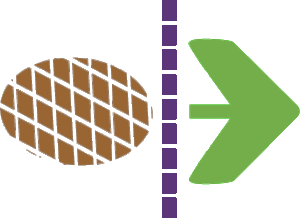Wampum Trail at Conflux Festival
Posted by renee; September 4th, 2009
Beaver, Wampum, Hoes at Conflux festival….
On September 20, 2009 at 15:00 I will be doing a walking tour called Wampum Trail of lower Manhattan, starting at the National Museum of the American Indian library. Please join me if you can, rain or shine.

the supposed price paid for the purchase of Manhattan
Wampum Trail: Can historical commemoration such as recent Dutch 400-year events be subverted toward a more radical relationship to historical research and cultural practices as a way to undermine and resist dominance in the present?
If you take the New Amsterdam Trail tour you are asked to listen, walk and follow but also to lunch, shop and experience the dynamism and renewal of downtown today. This walking tour asks instead to pause, look and reflect while rethinking the former Dutch colonization of NYC.
This peripatetic tour in a way exercises psychogeography by walking backwards, so to speak, through time but also looks at present day NYC in regard to its colonial history that hasn’t been written down in the history books. Rather it combines facts with anecdotes and oral history passed down by generations of Native Americans living in NYC today along with reinscriptive historic perspectives.
We will begin at the library in the National Museum of the American Indian, moving on to The Netherlands Monument at Battery Park, passing by The American Indian Community House, then crossing to Beaver Street. We will make stops along Pearl Street, the former water’s edge of Manhattan, and continue via Wall Street (the Dutch are credited with inventing the stock market). Broadway takes us along City Hall, over to the Bowery, finally ending at Astor Place, (Kintecoying), a former sacred gathering place. Afterwards, those who are thirsty can jump on the subway and end with a bout of Dutch courage at the Dutch Kills bar in Long Island City.
Map of the Trail


